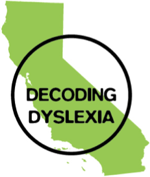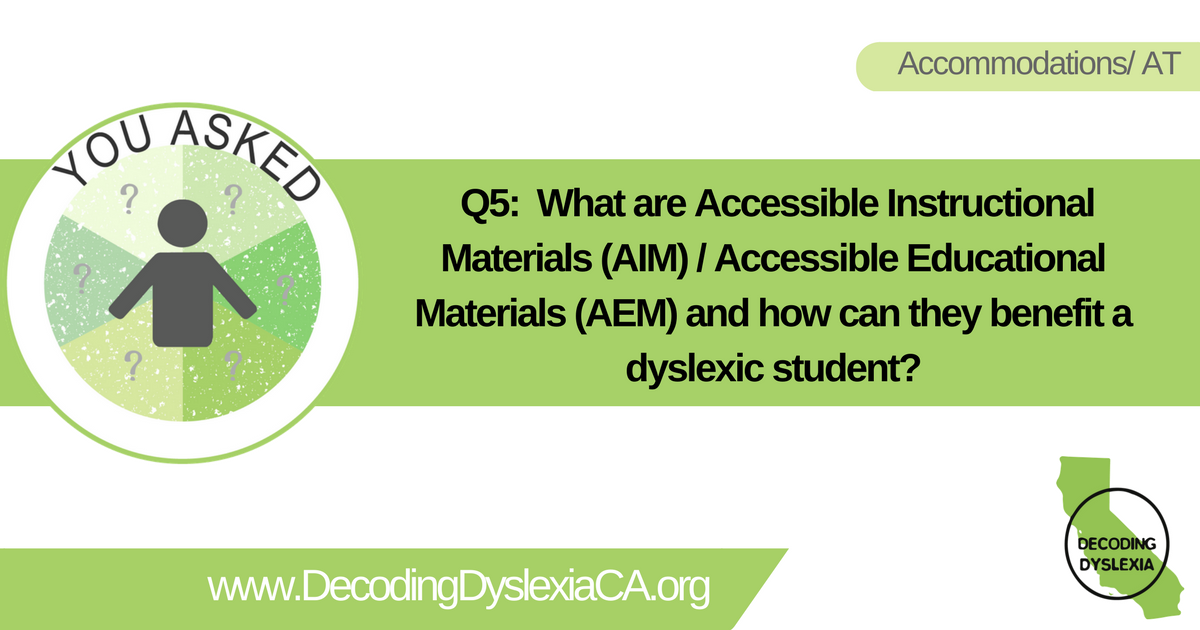Download a PDF version of this You Asked question and answer here.
Q5: What are Accessible Instructional Materials (AIM) / Accessible Educational Materials (AEM) and how can they benefit a dyslexic student?
A: Some students with disabilities are unable to use traditional print materials to obtain information and access their curriculum and may need specialized formats such as large print, audio recordings or digital text. These specialized formats are called accessible educational materials or AEM. If a student needs AEM, they must be provided to the student in a “timely manner”, which in California means at the same time as his or her peers. The laws outlining a student’s right to receive AEM include Title II of the ADA, Section 504 of the Vocational Rehabilitation Act and in several sections of the IDEA 2004 including Section 300.324(a)(2) and Section 300.172. In other words, if a student with a disability cannot access print in the same way as his peers (i.e. due to dyslexia a student is unable to read fluently at grade level), the school must determine if AEM is needed and provide them in the specialized formats that are accessible to the student in a timely manner.
A helpful article on “The Right of Students with Disabilities Who Need Accessible Instructional Materials to Receive These Materials in a Timely Manner: A Brief for Families and Educators” from the National Center on Accessible Educational Materials website can be downloaded HERE.
“The federal Individuals with Disabilities Education Act (IDEA) requires a district to provide accessible instructional materials to students who need them for participation and achievement. While SBE-adopted materials are available in accessible formats from the CDE, a district utilizing non-adopted materials will need to obtain digital files and have them converted to accessible formats…” (Source: CDE website http://www.cde.ca.gov/ci/rl/im/implementofimsnotadopt.asp).
For more YOU ASKED questions and answers click HERE


